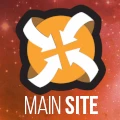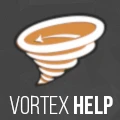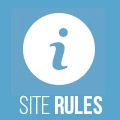How to use custom resources
| |
Outdated Information (Issue: NOTE: The primary source of this article is kept and maintained at the CS Wiki)
This article has outdated or incorrect information about the subject. You can help Nexus Mods by expanding it.
|
|---|
Overview
This is a quick-and-dirty How To that will help you use modders' resources and create new objects in your mod. I am assuming you know the very basics of using The Elder Scrolls Construction Set.
Get your resources in order
If you are using a modders' resource, you will need to download and install NifSkope. It's free. Do that first, then come back here. I will wait.
Now that you have NifSkope installed, you need to know why. NifSkope is a utility that edits NIF files, the 3-d models (we usually call them meshes) used in the Oblivion game world. Modders' resources often contain new meshes, and if you are looking to add new objects to your mod, you need to know the basics of getting them into the game.
Before you do anything else, make some folders to stay organized. Under ~Oblivion\Data, create the following, adapting for your name and mod name:
Meshes\YourModderName\YourModName Textures\YourModderName\YourModName
You may choose a different system, and you may have to adapt that as some files must be in certain sub-folder to work properly in the game. This is just a starting point.
Now, unpack the resources you downloaded into your ~Data directory. The modder may have provided some reference to show you what is what, be it screenshots or an "example" plugin file for you to see it all in-game. You will need to figure out which NIF file is the model you want. If you have no other way to tell, double-click each NIF to open it in NifSkope so you can see it there.
QUOTE Handy Tip: Create omods from modders' resource packages so you can quickly remove them when you're done.
Once you have figured out which NIF file you need, copy it to your mod's mesh folder. Make sure it is named so that you can tell what it is by the file name, to keep things easy on you. Avoid spaces and punctuation, however.
If you have not already, open up your NIF in NifSkope. Expand all the + signs so you can see the texture paths. This is how the game knows what textures to use for what mesh; it is stored inside the NIF file. Copy all those textures to your mod's texture folder, renaming them to stay organized. Then right-click on the texture paths in NifSkope, one at a time, and browse to your copies. When you are done, save the NIF file.
To go with the textures that you copied into your folder, you must also copy the normal maps that go with them and put them in the same folder. Normal maps are the *_n.dds files. If your texture is redsofa.dds, then the normal map is redsofa_n.dds, and must be in the same folder with it. The game knows where to look for these files automatically; all you have to do is put them in the right folder with the right name.
Now you have your own copies of the resource's mesh and textures for your mod. When people install your mod, there is no risk of your files overwriting something already on their drive. It also frees you up to alter your copies as you like without worry.
Get your object into the game
Load your mod in the CS. As an example, I'm going to assume that you are making a house mod, and you want to use a custom sofa that you found online to place in your living room.
First, you'll need to create a new object. You need to know what type of object you are creating to make sure it functions correctly in the game world. Here are the basic categories:
Items are things you can put in containers, put in your inventory, eat, drink, or wear. Any item that has no specific purpose other than "flavor", such as dishes or inkwells and the like, is a Miscellaneous Item. Everything else has a specific purpose that is likely self-explanatory.
World objects are things that are tangible and/or visible in the game, such as houses and tables and lights and doors, but that cannot be in a container or inventory, etc. Under World Objects are more sub-categories, some of which merit explanation:
Activators - things the player can "click on" in-game, often things like levers or switches.
Containers - anything that is not an actor, but has an inventory, goes here.
Furniture - things that cause characters to animate and sit on, or lay down on, when activated (beds, chairs, etc)
Lights - emits light, like candles and hanging lamps
Static - does nothing and cannot be interacted with; only provides collision and decor, like tables and bookshelves.
You want to add a sofa, so this needs to go under Furniture in World Objects if you want the player to be able to sit on it. Note: There are some furnishings under Static, but actors cannot sit on/lay down on these - they are for decoration only.
You have two ways to go about this. You can either make a new object completely, or you can edit a similar object to suit your needs if one exists. I will show you both ways.
Make a New Object:
- Right-click anywhere in the list of objects under Furniture. Click New. Give your object a new, unique ID - preferably something unique to you and your mod, to make it easy to find. Then give it a "Name" - this is what the player will see when they hover over the object in-game.
- Click "Add NIF File". Browse to the NIF file you want to use and click "Open."
- We have to do something special for furniture. Once you choose a NIF, click OK. The CS will give you an error about having not chosen furniture markers. That is fine. Double-click your new object from the list, and you will now see furniture marker options available with previews. Mark the boxes you want, and click OK again. You won't have to do that for anything but furniture; however, there will probably be other settings you want to adjust, unless you are making a simple static.
- Now you have a working sofa, and you can drop it in the world.
Sometimes you may want to just copy an existing object. This can be true if you do not want to actually change the model, or if there are a lot of settings already in place that you do not want to be bothered changing (such as inventory icon, weapon damage, etc.). If that is the case:
- Find an object almost just like the one you want to make.
- Change its ID to something proprietary to you and your mod, and click OK. You will be asked if you want to create a new form. Always, always, always click YES! Unless, of course, you want ALL instances of this object in the ENTIRE GAME to be affected by your change.
- Now you will see YOUR version of this object in the object list. You can follow the above steps to change the NIF file, if you wish, and adjust any other settings.
- Now drop your object into the world.
Either way you went, save your .esp and play test it in the game.
- If your object is shown with a giant yellow ! or WTF sign, your file path in the CS is incorrect, or your NIF file is in the wrong place, misnamed, or not there.
- If your object is bright pink (or sometimes solid black), your texture paths in the NIF file are not correct, or the textures are in the wrong place, misnamed, or not there.
- If your object is invisible, your normal map is misnamed, in the wrong place, or not there.





